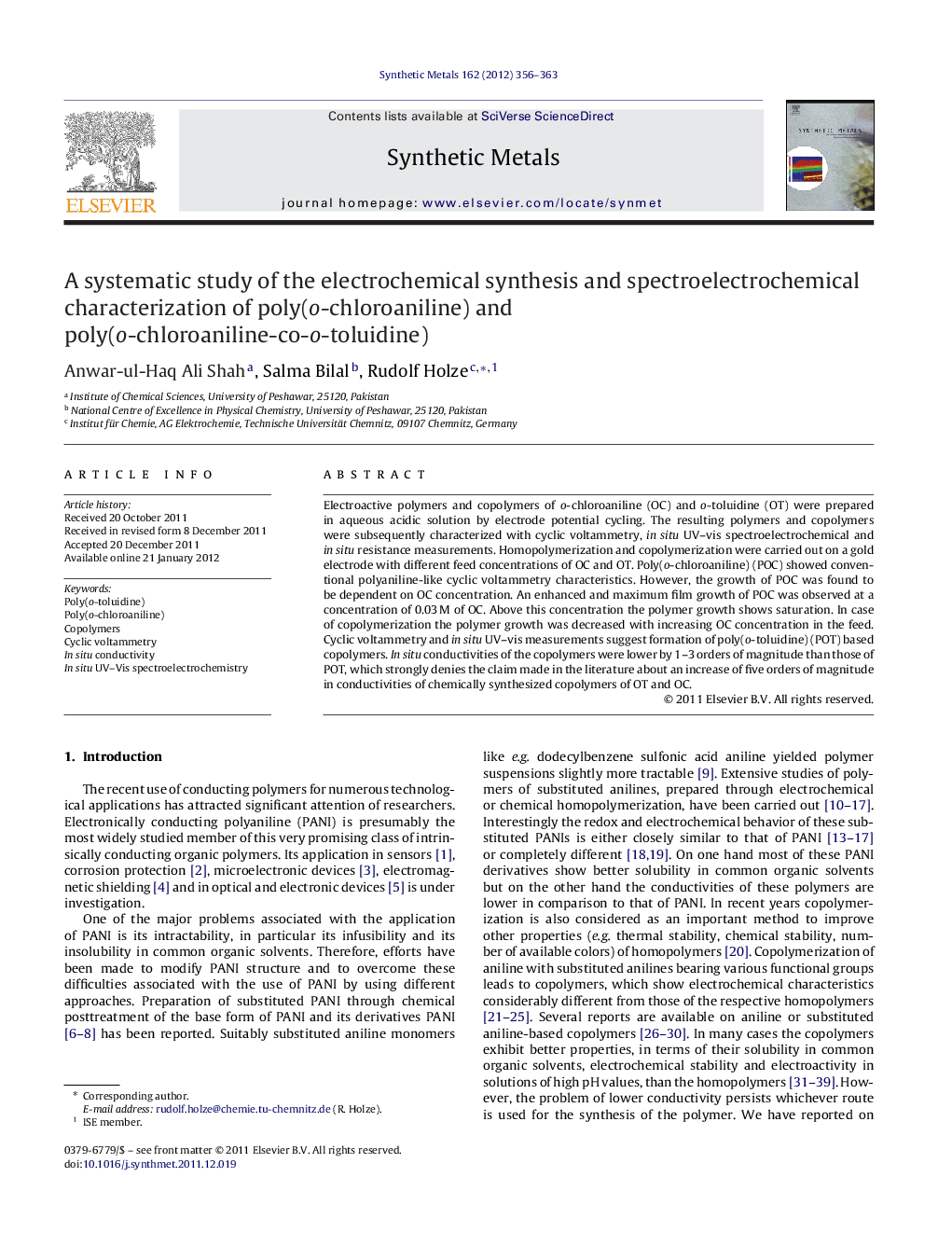| Article ID | Journal | Published Year | Pages | File Type |
|---|---|---|---|---|
| 1441824 | Synthetic Metals | 2012 | 8 Pages |
Electroactive polymers and copolymers of o-chloroaniline (OC) and o-toluidine (OT) were prepared in aqueous acidic solution by electrode potential cycling. The resulting polymers and copolymers were subsequently characterized with cyclic voltammetry, in situ UV–vis spectroelectrochemical and in situ resistance measurements. Homopolymerization and copolymerization were carried out on a gold electrode with different feed concentrations of OC and OT. Poly(o-chloroaniline) (POC) showed conventional polyaniline-like cyclic voltammetry characteristics. However, the growth of POC was found to be dependent on OC concentration. An enhanced and maximum film growth of POC was observed at a concentration of 0.03 M of OC. Above this concentration the polymer growth shows saturation. In case of copolymerization the polymer growth was decreased with increasing OC concentration in the feed. Cyclic voltammetry and in situ UV–vis measurements suggest formation of poly(o-toluidine) (POT) based copolymers. In situ conductivities of the copolymers were lower by 1–3 orders of magnitude than those of POT, which strongly denies the claim made in the literature about an increase of five orders of magnitude in conductivities of chemically synthesized copolymers of OT and OC.
► Electroactive polymers and copolymers of o-chloroaniline (OC) and o-toluidine (OT) were prepared by electrode potential cycling. ► Cyclic voltammetry and in situ UV–vis measurements suggest formation of poly(o-toluidine) (POT) based copolymers. ► In situ conductivities of the copolymers were lower by 1–3 orders of magnitude than those of POT. ► A claimed greatly increased conductivity of chemically synthesized copolymers of OT and OC could not be reproduced.
